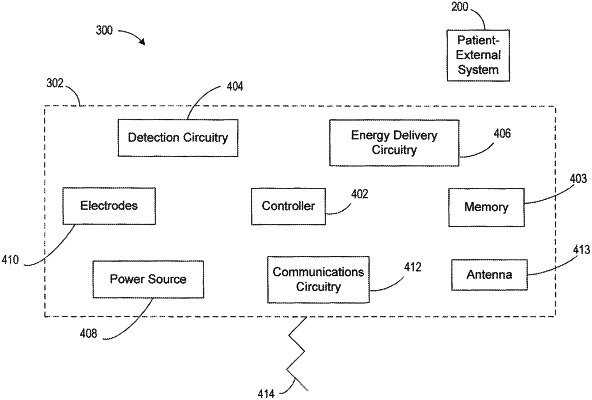| CPC A61N 1/375 (2013.01) [A61N 1/056 (2013.01); A61N 1/0587 (2013.01); A61N 1/368 (2013.01); A61N 1/3684 (2013.01); A61N 1/36514 (2013.01); A61N 1/36843 (2017.08); A61N 1/3756 (2013.01); A61N 1/3787 (2013.01); A61N 1/37235 (2013.01); A61N 1/37512 (2017.08); A61N 1/37518 (2017.08); A61N 1/3962 (2013.01); A61N 1/3987 (2013.01); A61N 1/39622 (2017.08); A61N 1/37205 (2013.01); A61N 1/37288 (2013.01)] | 20 Claims |

|
1. A leadless cardiac pacemaker (LCP) for implantation in a patient's heart, comprising:
sensing circuitry configured to sense cardiac electrical activity of the patient's heart;
pacing circuitry configured to provide pacing therapy to the patient's heart based at least in part on the sensed cardiac electrical activity sensed by the sensing circuitry; and
communication circuitry for communicating with another device, wherein the communication circuitry is configured to communicate with the other device using low-voltage communication pulses, encoded with data, that are conducted through the patient's heart via conduction provided by cardiac tissue of the patient's heart, wherein the low-voltage communication pulses are configured to not cause a reaction in the cardiac tissue of the patient's heart.
|